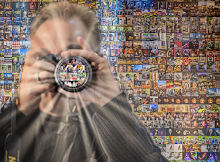Dispassion
Over time, and through usage based on definitional perceptions, words will sometimes take on negative connotations. We all know about passion or the mental state of being passionate about whatever we obsess over, but what of a person who is considered to be dispassionate?
Sounds terrible to think that one might be dispassionate or exhibit qualities (such as they exist in this case) of dispassion.
Since the invention of photography in the early 1800’s, the craft and art has provided many forms of expression, from landscape, street, photojournalism, and all types of images encompassed within those genres. One known, but little discussed form of photography, is that of death photos. This is where dispassion comes in, particularly when viewing those images that were taken in the 19th and early 20th Centuries. One can research numerous articles about the when, how’s and why’s of death photos.
My Aunt Jeanie, a national award-winning photographer in the early 1960’s, began taking death photos of immediate family members in the 1990’s. I continued her tradition in the early 2000’s. It takes a high degree of dispassion to endeavor this type of photography. It’s easy when the images are from strangers decades ago, but not so much when the subjects are family in the contemporary now. I avoid viewing her photos and my own of this genre. While I made the decision to not engage in the taking of death photos in the future, I failed in that declaration when my Mother passed. Those are images that are not for publication.
Working with digital tintype images, the subject matter of the ancient and ever-present human conditions of aging and decline has presented me with a compelling “need” to document. These images, of which I’ve taken a fair number over the past year, may or may not ever be presented in whole or as a series. It’s a personal exploration requiring a high degree of dispassion. I honestly don’t fully understand this stated “need.”
But such is the art of photography. Such is the drive of any art form, whether photography, painting, writing or music. The kind of photos I’ve been taking in this emerging series requires passion. It also requires a dispassionate approach in the creative process of this subject matter.
If you have a negative idea of what “dispassion” or “dispassionate” mean, I encourage you to open a dictionary. Both passion and dispassion require open minds. They also require passion on numerous levels.
©Rick Burnett Baker





















